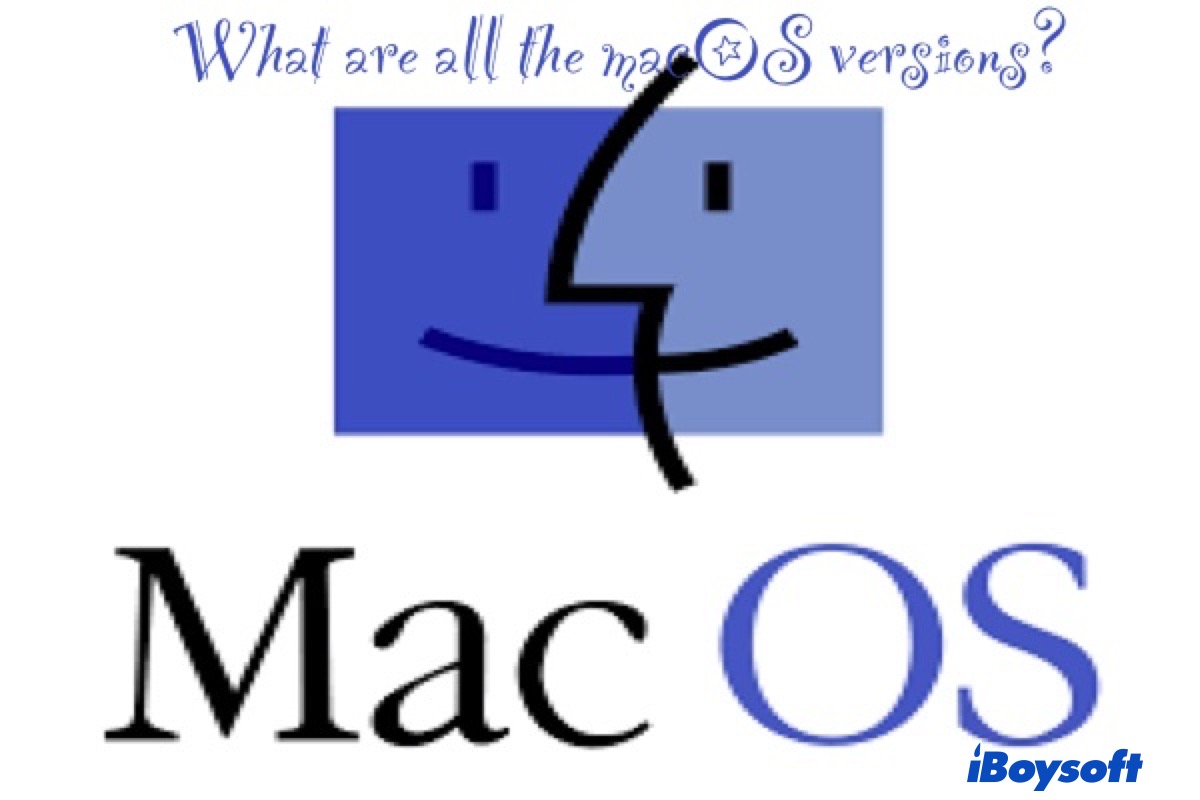The Mac operating system (Mac OS) is the second most widely used operating system targeted for Apple's Mac family of personal computers. It's praised for its straightforward graphical interface and high security but criticized for updating problems and hardware limitations. We will walk you through the Mac operating systems list in three categories - macOS, OS X, and Mac OS X, starting from the latest Mac OS version- macOS 15 Sequoia.
If you want to download macOS Sierra and earlier versions, get them directly here (Old Mac OS download)
If you need macOS High Sierra and later versions, download them directly here (Mac OS Installer Download).
Mac OS list in order
Here's a list of Mac OS versions Apple has released, along with their public and internal code names (if available), the release dates, latest versions, and compatible devices, including all macOS versions, Mac OS X versions, and the old OS X versions.
Desktop Macs and MacBook, MacBook Air, MacBook Pro OS version list:
| macOS Versions | Release Date | Latest Version | Compatible Devices |
| macOS 26: Tahoe | 2025 Fall | Public Beta 3 | MacBook Air (2020 and later), MacBook Pro (Apple silicon): 2020 and later, MacBook Pro (16-inch, 2019), MacBook Pro (13-inch, 2020, four Thunderbolt 3 ports), iMac (2020 and later), Mac Pro (2019 and later), Mac Studio (2022 and later), Mac mini (2020 and later) |
| macOS 15: Sequoia | September 16, 2024 | 15.6 | MacBook Air (2020 and later), MacBook Pro (2018 and later), iMac (2019 and later), iMac Pro (2017), Mac Pro (2019 and later), Mac Studio (2022 and later), Mac mini (2018 and later) |
| macOS 14: Sonoma | September 26, 2023 | 14.7.7 | MacBook Air (2018 and later), MacBook Pro (2018 and later), iMac (2019 and later), Mac mini (2018 and later), Mac Pro (2019 and later), Mac Studio (2022 and later) |
| macOS 13: Ventura | October 24, 2022 | 13.7.7 | MacBook Air (2018 and later), MacBook Pro (2017 and later), iMac (2017 and later), iMac Pro (2017), Mac Pro (2019 and later), Mac Studio (2022 and later), MacBook (2017) |
| macOS 12: Monterey | October 25, 2021 | 12.7.6 | MacBook Air (2018 and later), MacBook Pro (2018 and later), iMac (2019 and later), Mac mini (2018 and later), Mac Pro (2019 and later), Mac Studio (2022 and later) |
| macOS 11: Big Sur | November 12, 2020 | 11.7.10 | MacBook Air (Mid 2013 and later), MacBook Pro (Late 2013 and later), iMac (Mid 2014 and later), Mac mini (Late 2014 and later), Mac Pro (Late 2013 and later) |
| macOS 10.15: Catalina | October 7, 2019 | 10.15.7 | MacBook Air (Mid 2012 and later), MacBook Pro (Mid 2012 and later), iMac (Late 2012 and later), Mac mini (Late 2012 and later), Mac Pro (Late 2013 and later) |
| macOS 10.14: Mojave | September 24, 2018 | 10.14.6 | MacBook Air (Mid 2012 and later), MacBook Pro (Mid 2012 and later), iMac (Late 2012 and later), Mac mini (Late 2012 and later), Mac Pro (2013 and later) |
| macOS 10.13: High Sierra | September 25, 2017 | 10.13.6 | MacBook Air (Late 2012 and later), MacBook Pro (Mid 2012 and later), iMac (Late 2009 and later), Mac mini ( mid 2010 and later), Mac Pro (Mid 2010 and later) |
| macOS 10.12: Sierra | September 20, 2016 | 10.12.6 | MacBook Air (Late 2010 and later), MacBook Pro (Mid 2010 and later), iMac (Late 2009 and later), Mac mini (Mid 2010 and later), Mac Pro (Mid 2010 and later) |
| OS X 10.11: El Capitan | September 30, 2015 | 10.11.6 | MacBook Air (Late 2008 and later), MacBook Pro (Mid 2007 and later), iMac (Mid 2007 and later), Mac mini (Early 2009 and later), Mac Pro (Early 2008 and later) |
| OS X 10.10: Yosemite | October 16, 2014 | 10.10.5 | MacBook Air (Late 2008 to Early 2015), MacBook Pro (Mid 2007 to Mid 2015), iMac (Mid 2007 to Mid 201), Mac mini (Early 2009 to Late 2014), Mac Pro (Early 2008 to Late 2013) |
| OS X 10.9: Mavericks | October 22, 2013 | 10.9.5 | MacBook (Late 2008 and later), MacBook Pro (Mid 2007 and later), MacBook Air (Late 2008 and later), iMac (Mid 2007 and later), Mac mini (Early 2009 and later), Mac Pro (Early2008 and later) |
| OS X 10.8: Mountain Lion | July 25, 2012 | 10.8.5 | MacBook (Late 2008 and later), MacBook Pro (Mid 2007 and later), MacBook Air (Late 2008 and later), iMac (2007 and later), Mac mini (Early 2009 and later), Mac Pro (Early2008 and later) |
| OS X 10.7: Lion | July 20, 2011 | 10.7.5 | x86-64 CPU with an Intel Core 2 Duo, Intel Core i5, Intel Core i7, or Xeon processor. |
| OS X 10.6: Snow Leopard | August 28, 2009 | 10.6.8 | Mac computer with an Intel processor |
| OS X 10.5: Leopard | October 26, 2007 | 10.5.8 | Later flat-panel iMac G4s, the iMac G5, iMac Intel Core Duo and iMac Intel Core 2 Duo, PowerBook G4, Power Mac G4, Power Mac G5, iBook G4, MacBook, MacBook Pro, MacBook Air, Mac Pro, Mac Mini |
| OS X 10.4: Tiger | April 29, 2005 | 10.4.11 | PowerPC |
| OS X 10.3: Panther | October 24, 2003 | 10.3.9 | PowerPC G3, G4, or G5 processor |
| OS X 10.2: Jaguar | August 23, 2002 | 10.2.8 | PowerPC G3 or G4 CPU and 128 MB of RAM |
| OS X 10.1: Puma | September 25, 2001 | 10.1.5 | Power Mac G3, Power Mac G4, Power Mac G4 Cube, iMac G3, iMac G4,eMac, PowerBook G3, except for the original PowerBook G3, PowerBook G4, iBook |
| OS X 10.0: Cheetah | March 24, 2001 | 10.0.4 | Power Macintosh G3 Beige, G3 B&W, G4, G4 Cube, iMac G3, PowerBook G3, PowerBook G4, iBook |
You can share this list of Mac OS by clicking the button below.
All macOS versions
Apple changed the name 'OS X' to 'macOS' in 2016, adopting the nomenclature they were using for their other OSe: iOS, watchOS, and tvOS. As the latest series of Mac operating systems, let's check the macOS versions list and you may find something new in the macOS version history.
macOS 26 Tahoe
macOS 26 Tahoe, the newest macOS version in order and the final major release of Apple's desktop operating system for Intel-based Macs, is expected to be released in the fall of 2025. Named after the scenic Lake Tahoe, the moniker reflects a significant visual overhaul of the operating system, which introduces a new "Liquid Glass" design language with translucent, layered, and dynamic interfaces.
Key new and improved features in macOS 26 Tahoe include a redesigned user interface with a transparent menu bar, customizable folder colors and icons, and an updated Spotlight search that now includes quick actions and deeper integration with Apple Intelligence. The update also brings new Continuity features, such as the new Phone app and Live Activities, which mirror your iPhone's real-time information directly to your Mac's menu bar.
Notably, macOS Tahoe marks the end of an era, as Apple has announced it will be the final version of macOS to support Intel-based Macs. While supported Intel machines will continue to receive security updates for several years, this release signifies the full transition of the Mac platform to Apple Silicon.
macOS 15 Sequoia
macOS Sequoia, was released on September 16, 2024. Similar to previous macOS versions, it's also named after a location in California: Sequoia National Park. This update is full of exciting new features, bringing the productivity and intelligence on Mac to an entirely new level.
Perhaps the most thrilling feature is Apple Intelligence. This personal intelligence system combines the power of generative AI with personal context to deliver useful and relevant intelligence privately and securely.
It elevates your capability to write and communicate from nearly anywhere on Mac. The intelligent writing tools allow you to rewrite with a different version or tone, proofread with edit suggestions and explanations, and summarize selected text in digestible forms, such as bullet points or tables.
Besides, it can also prioritize emails and notifications with summaries of key details and record, transcribe, and summarize audio. You'll also be able to create images from text descriptions and rough sketches. However, the bad news is Apple Intelligence is exclusive to Apple Silicon Macs.
The second noticeable function is iPhone Mirroring, which enables you to control your iPhone from your Mac, without having to reach for it. You can interact with your iPhone wirelessly using your Mac, catch your iPhone notifications and take action, and transfer files between two devices.
On macOS Sequoia, all your credentials will be safely stored in the new Passwords app, synced across Mac, iPhone, iPad, Apple Vision Pro, and Windows.
Window Titling is also improved to arrange windows the way you like faster than doing it manually. Safari gets some minor updates too. The new page info tool allows you to access more information about a page, such as directions in Maps. Reader now has a table of contents and a page summary.
Apart from those, you can enjoy more games on Mac, type with tone, flair, and feeling in Messages, see calculation history in Calculator, solve math equations automatically in Notes, and more.
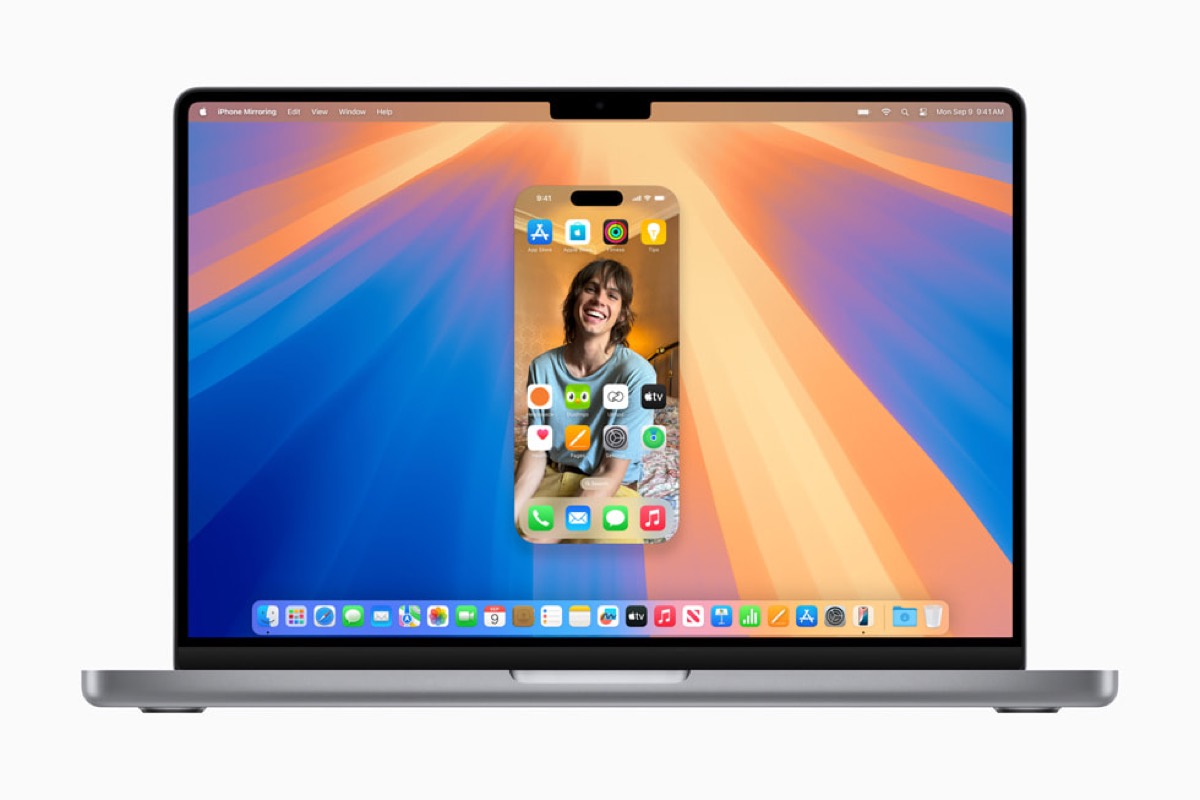
macOS 14 Sonoma
macOS Sonoma was available to the general public on September 26, 2023. It brings a handful of new features and improvements over macOS Ventura or earlier versions, elevating users' productivity and creativity.
The biggest change in macOS Sonoma is widgets. You're now allowed to put widgets on the desktop and interact with them without opening the app. The new, enhanced widget gallery offers both local Mac widgets and widgets from your iPhone, thanks to the magic of continuity.
The login experience is also much more fun on macOS Sonoma, with the screensavers featuring slow-motion videos of breathtaking locations worldwide.
Another app that has had major updates is Safari. It has enhanced Private Browsing, providing better protection against unauthorized persons. Besides, it enables you to create web apps that are accessible from the Dock and make profiles for specific topics.
On top of that, you can enjoy the presenter mode in video conferences with reactions that can be triggered by hand gestures, run resource-intensive games with great performance, easily locate wanted messages in Messages, and much more.
The bad news about macOS Sonoma is that it has discontinued its support for legacy Mail app plugins.
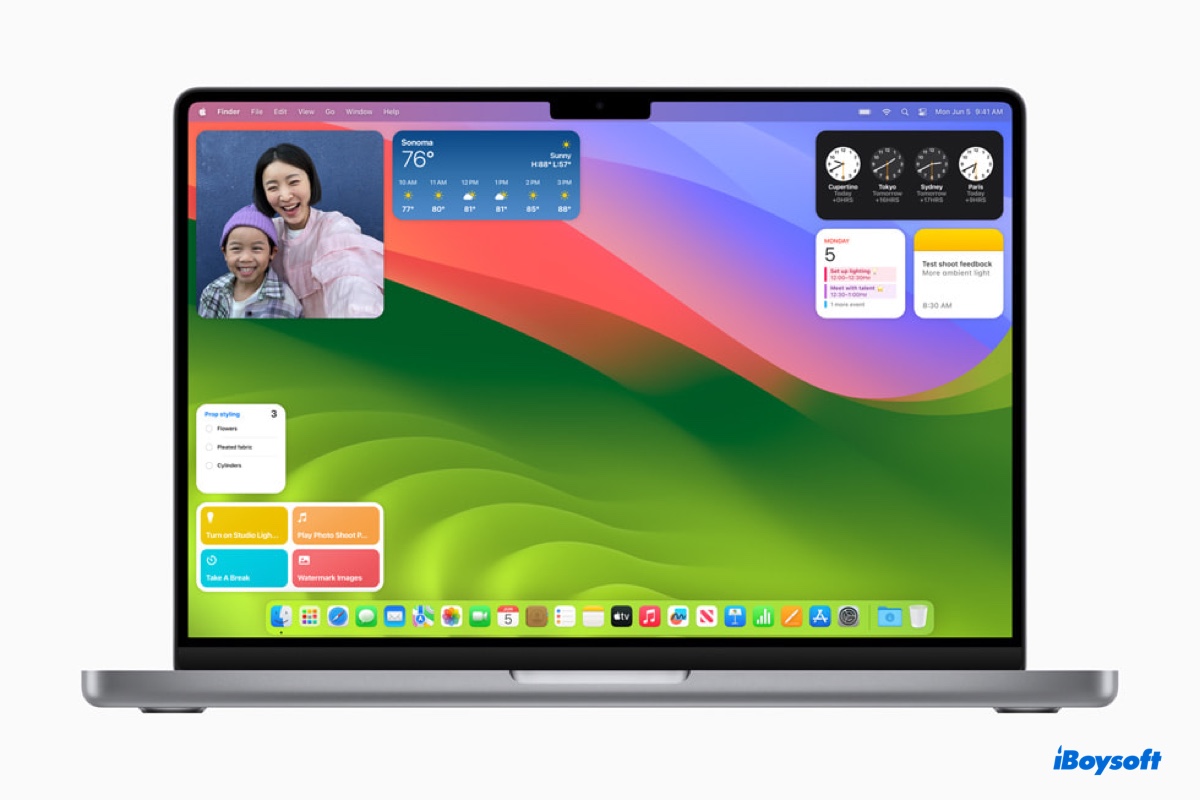
macOS 13 Ventura
macOS Ventura was released on October 24, 2022. This macOS release has powerful productivity tools and new continuous interoperability features, which give users a better experience than before.
One of the important upgrades is the Stage Manager, which will automatically sort out all the open apps and windows. The using window will be displayed in the center of the screen, and the other opening windows will be displayed on the left side of the screen so that the user can quickly switch between different tasks. Users can manage windows in groups when processing tasks or projects that need different apps.
Another important upgrade is the Continuity Camera where users can use their iPhone as the camera on Mac. Relying on the powerful continuous intercommunication function, Mac can automatically identify and use the camera of the nearby iPhone without users waking up or selecting. And the iPhone can also establish a wireless connection with the Mac, making it more flexible to use.
For Mail, users can undo send, schedule send set reminders, and so on. For Safari, users can add their own tabs and see the Tab Group update instantly as they work together. Furthermore, you can send messages in Safari and launch FaceTime.
In addition to the above changes, Spotlight is also optimized and adds some functions like web picture research, previewing files with Quick Look, and so on. Furthermore, users can use iCloud to share Photo Library with no more than five family members. A new app Apple Freeform has also been released this year (only compatible with macOS Ventura 13.1, iOS 16.2, iPadOS 16.2, and later).
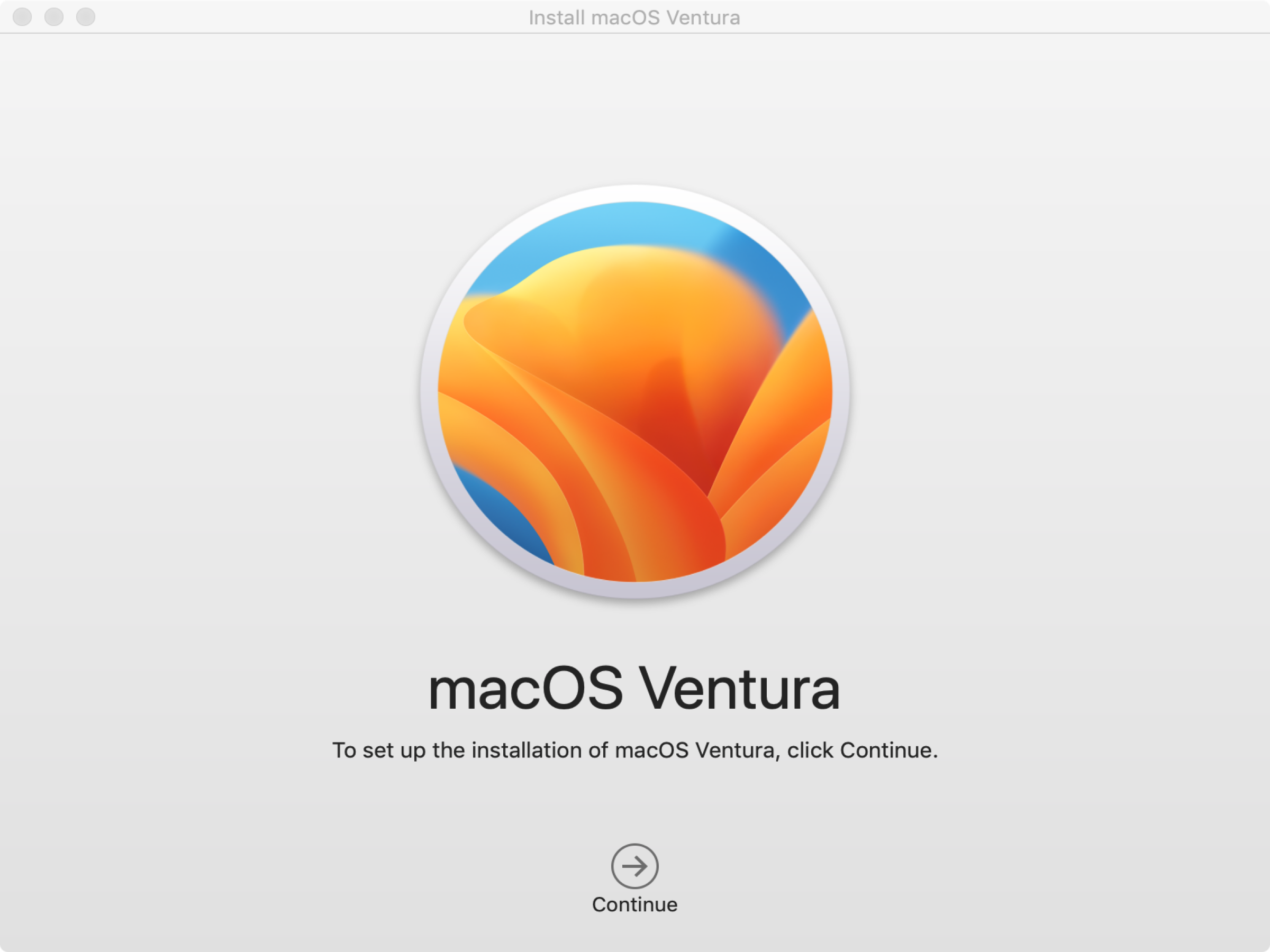
macOS 12 Monterey
macOS Monterey was officially launched on October 25, 2021. It is an incremental upgrade from the already-polished macOS Big Sur, focusing on transiting apps on iPhones and iPads to Mac. One significant feature of this update is that people can create links to FaceTime calls to share with other Mac users and, for the first time, with Android and Windows users.
Another neat feature that pops up on FaceTime, which outperforms competitors like Zoom, is SharePlay. It allows people to watch or listen to streaming content by syncing each's video and playback controls. The Messages app has a new "Share with You" feature that can reveal the contents you've received in Messages in the relevant app, which applies to the Apple TV app, Photos, Safari, Apple Podcasts, etc.
Other changes include Live Text and Shortcuts. Apple's search engine - Safari, has also improved to allow people to open and close entire tab groups as needed quickly. However, the headline-grabber is probably Universal Control, allowing people to control multiple Apple devices with a single mouse and keyboard.
These macOS 12 powerful features intrigue people to upgrade. But it's not compatible with every Mac model (only compatible with MacBook Air and MacBook Pro models released in early 2015 and later). Also, it doesn't support Macs featuring Nvidia Brand GPUs.
If you find bugs after updating to the latest Mac OS - macOS Monterey, read macOS Monterey Problems and Fixes.

macOS 11 Big Sur
macOS 11 Big Sur was released on November 12, 2020, and named after a coastal area in California. It is a step toward cohering its user experience across Apple devices. iPhone and iPad users may feel newly familiar with Big Sur since the redesign adds up to an aesthetic that is closer to iOS.
macOS Big Sur update and Apple silicon transition that happened subsequently were two significant events in 2020. Big Sur is the first macOS for Macs powered by the M1 chips that natively run iOS and iPadOS applications. It also allows faster backups on APFS-based Time Machine.
The interface with full-height sidebars and refreshed Dock accommodating uniform square icons with rounded edges display its main design change. Safari, Maps, and Messages are all updated with useful new features such as providing guides that allow you to discover new palaces to explore and cycling directions that you can send to your iPhone.
Moreover, the Control Center that we enjoyed for years on iPhones is finally on Macs. You can now access the controls you use most such as Bluetooth, Wi-Fi, AirDrop controls, Do Not Disturb, and more, with a simple click on the Control Center button from the menu bar. Unfortunately, Big Sur dropped support for some Macs released in 2012 and 2013.
If you want to get macOS 11, please follow How to Download macOS Big Sur Full Installer.
If you encounter data loss when updating, please read How to Fix macOS Big Sur Problems.

macOS 10.15 Catalina
Released in 2019, macOS Catalina comes with three striking new apps: Apple Music, Apple TV, and Apple Podcasts. These three apps provide you with beautiful songs, fantastic movies and TV shows, and exciting radio broadcasts. What's more, tired of switching from your iPad to MacBook? Don't worry! Catalina can now create Mac apps from the iPad apps you run daily. This design connects your iPad and MacBook, which achieves the integration of the Mac operating system.
Catalina also brings some problems. First, it is incompatible with MacBook Air and Pros before 2012. Second, Catalina ends the support for 32-bit applications. You'll have to find replacements for these apps if you still want to run them with the macOS Catalina. Third, just like its predecessor, Mojave, the enhanced security of Catalina keeps requiring you to confirm to run certain apps.
If you need, you can download macOS Catalina to have a trial.
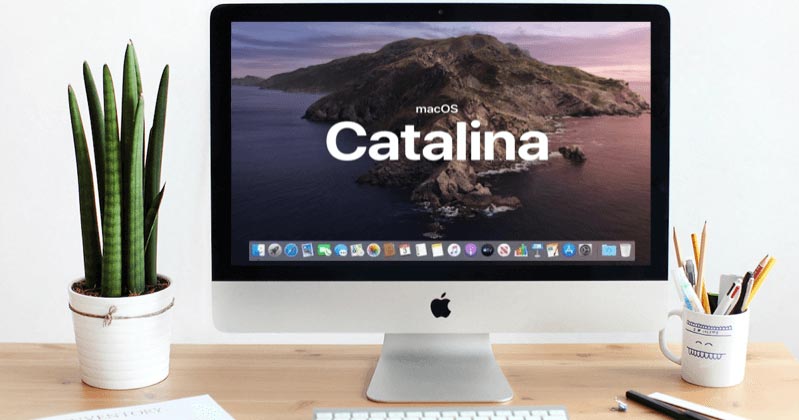
macOS 10.14 Mojave
Apple released macOS 10.14 Mojave on June 4, 2018, with new features including the brilliant introduction of dark mode, which is refreshing for users, image-management features built into QuickLook, a more informative App Store, etc.
macOS Mojave also has its flaws. With increased security measures, the user has to give apps permission to do things they've been doing all along, which can be annoying. Also, every new macOS may face incompatibility with previous software, which could cause data loss after updating to macOS Mojave.
To download macOS 10.14, follow: How to download macOS Mojave DMG, ISO, and PKG Installer.
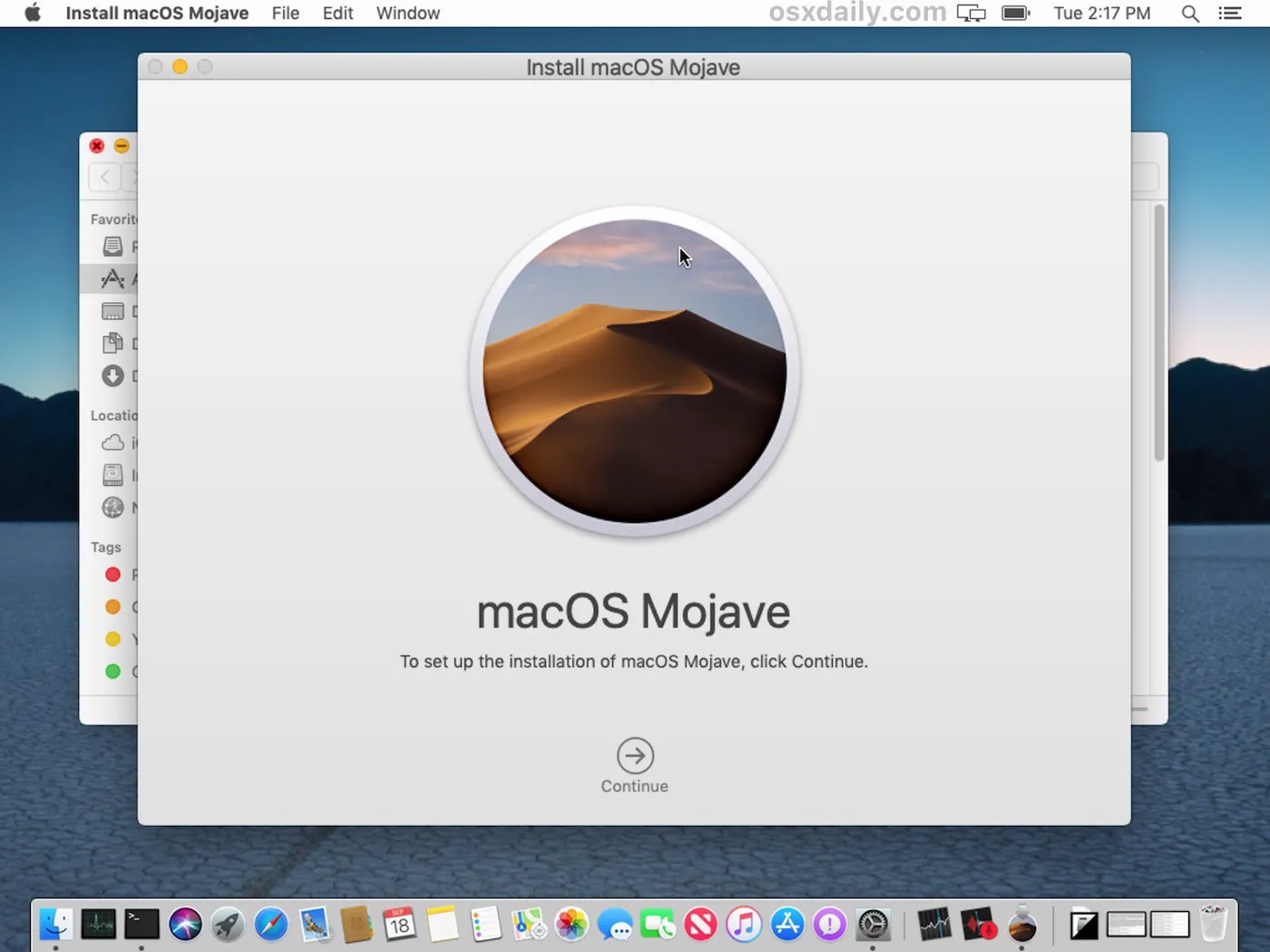
macOS 10.12 Sierra and macOS 10.13 High Sierra
macOS 10.12 Sierra is the first one on the list of macOS versions to receive the name change from California's landmark to its coastal areas. Released in 2016, the new features of macOS 10.12 Sierra include the addition of Siri, optimized storage, and updates to Photos, Messages, and iTunes. The introduction of Siri can be a ground-breaking design for Mac operating system. With the help of Siri, we can quickly find documents and get access to file without wasting too much time.
macOS 10.13 High Sierra was released one year later. Like OS X El Capitan and OS X Mountain Lion, this OS is also a refinement-based update, having very few new features. Nevertheless, sometimes it's the small change that makes a big difference. The highlight of this version is the use of the new Apple File System(APFS), which changes how data is stored and organized.
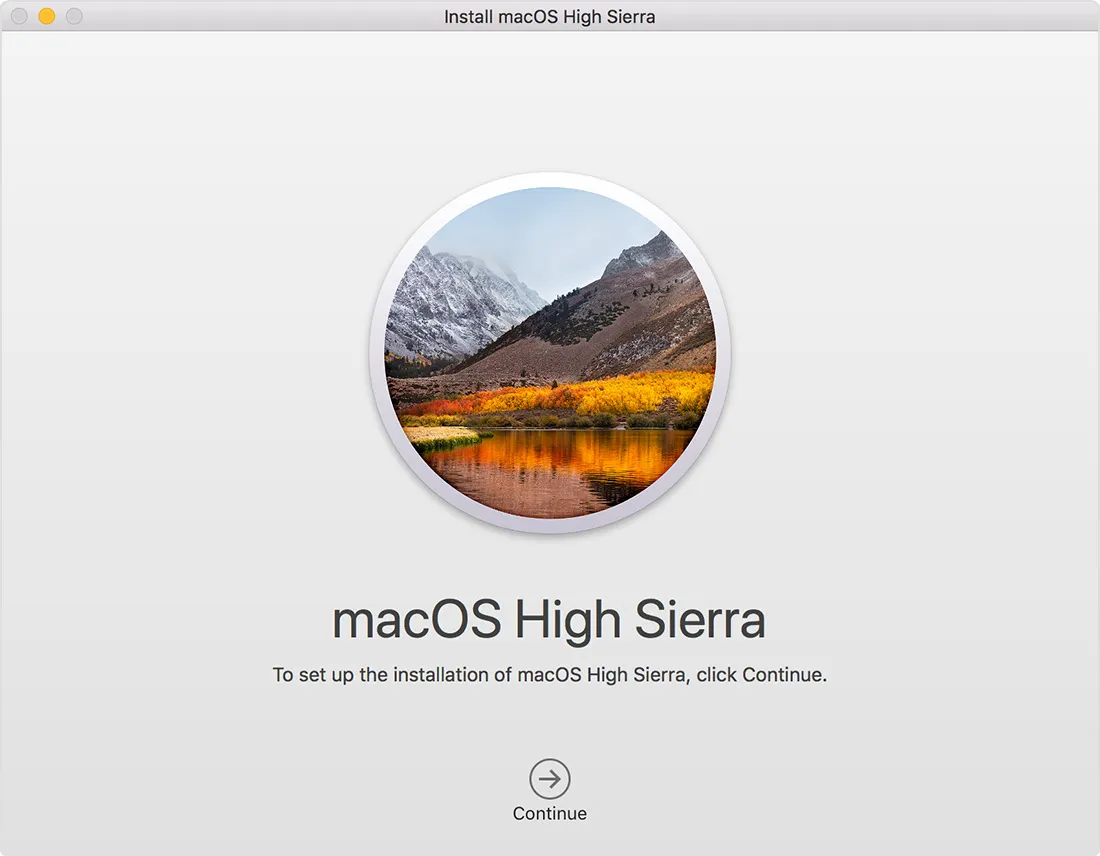
Now, you know all versions of macOS until 2024 with their highlights and shortcomings. Read on to discover the older versions of Mac operating systems.
Share the MacBook versions list with your friends.
OS X versions
Apple shortened the name 'Mac OS X' to 'OS X' in 2012 and switched to landmarks in California to name operating systems since OS X 10.9 Mavericks. Here, we will explain all the OS X versions to you.
OS X 10.11 El Capitan
Released in 2015, instead of introducing significant changes, Apple described OS X 10.11 El Capitan as containing 'refinements to the Mac experience' and 'improvements to system performance' rather than new features. OS X 10.11 El Capitan offers battery and speed improvements, improved language support, and mission control for its pros. Separate windows make it more convenient for users to switch from one to another.
As for the cons, though El Capitan has enhanced security, however, you can't have your cake and eat it. Because of the enhanced security, some functions don't work anymore. For example, new security features in El Capitan prevent some free utilities from changing default folder icons, and the old paste-into-Get-Info method doesn't work either.
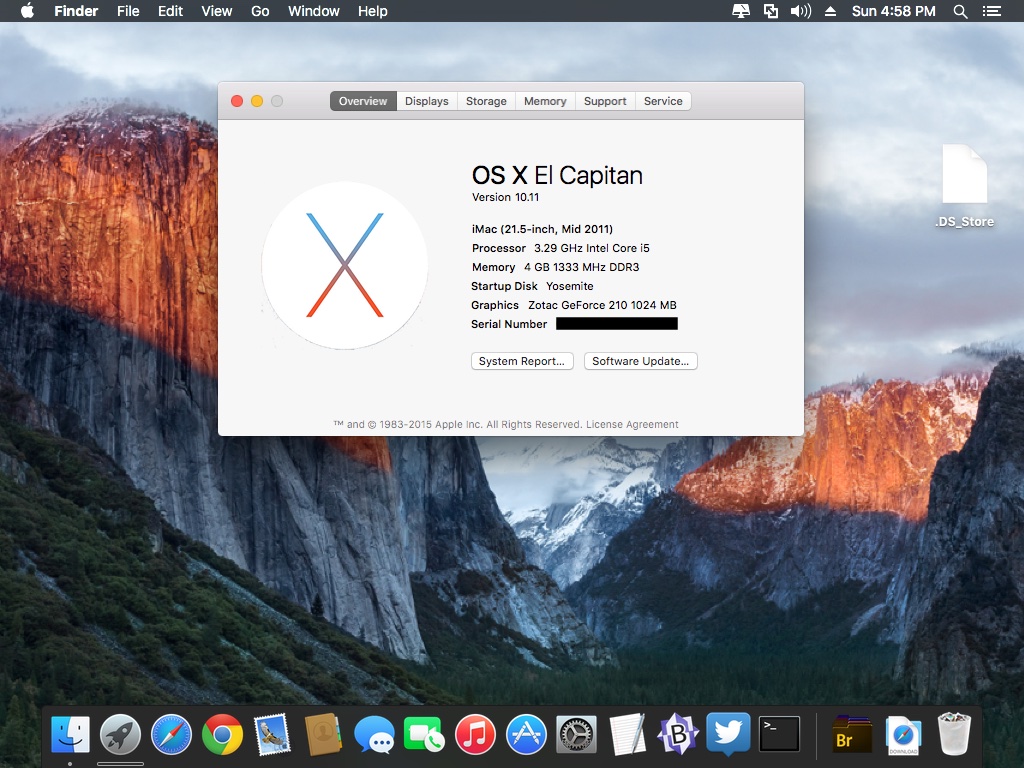
OS X 10.10 Yosemite
Released in 2014, Yosemite features a redesigned user interface similar to that of iOS 7. It also features the new concept 'handoff,' enabling users with iPhones running iOS 8.1 or later to answer phone calls, receive and send SMS messages, and complete unfinished iPhone emails on their Mac. These features bridge the gap between the computer and the smartphone.
As for its weaknesses, first, the system font won't likely cater to everyone's taste. Second, notifications can pile up and may drive you crazy if loads of things are waiting to be done.

OS X 10.9 Mavericks
Released in 2013, the highlight of Mavericks was that it was a free upgrade to all users running Snow Leopard or later with a 64-bit Intel processor. The changes of Mavericks included the addition of the previously iOS-only Maps and iBooks applications, improvements to the Notification Center, and many under-the-hood improvements.
For its cons, though you can see the links shared by others with the revamped Safari, shared links in Safari don't support Facebook, and you might feel offended if you are a Facebook lover. Also, though Mavericks tries to fulfill the target of multitasking, it still feels limited when you run the computer.
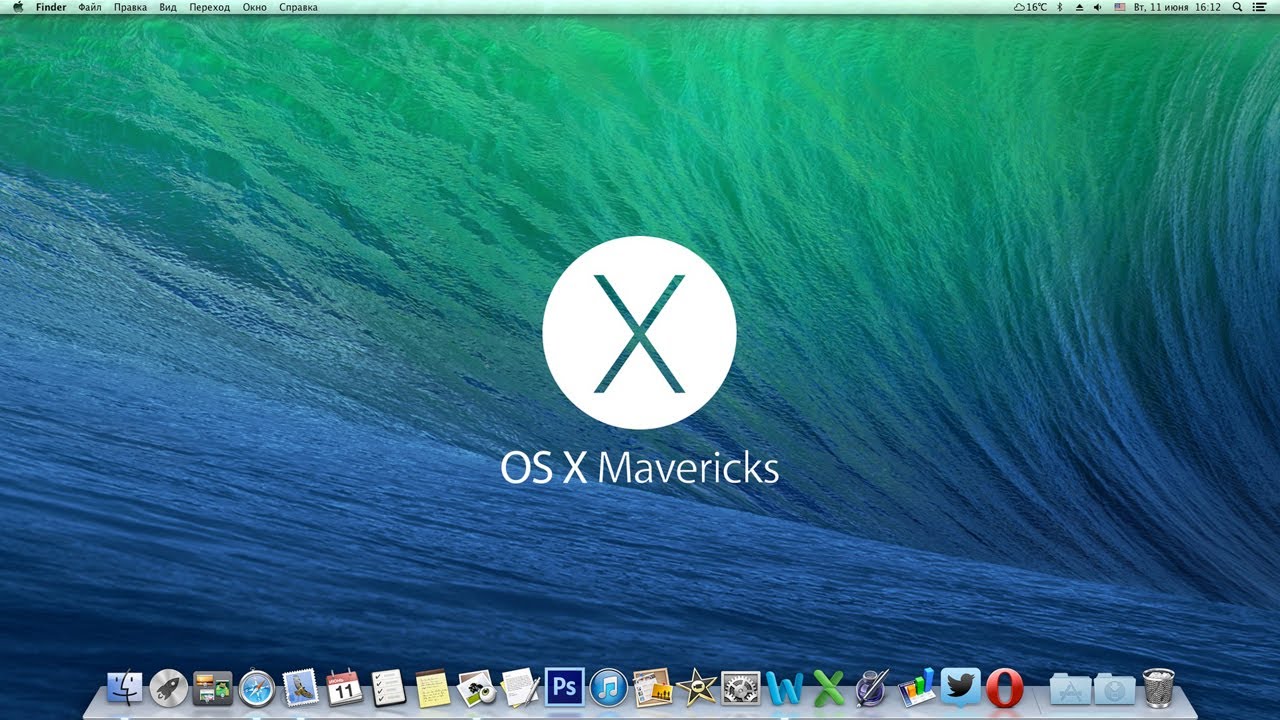
OS X 10.8 Mountain Lion
Since the release of Mountain Lion in 2012, Apple started to offer new releases of the Mac operating system on an annual basis as its iOS updates. Critics praised the new Notification Center, Messages, and speed improvements but condemned the unreliable iCloud and Game center lacking games.
It's worth mentioning that Mountain Lion introduced more Chinese features, including support for Baidu as an option for Safari search engine, QQ, 163.com, and 126.com services for Mail, etc. AirPlay Mirroring is an exciting feature borrowed from iOS, but it supports only a subset of Macs compatible with Mountain Lion.

If you think the macOS versions list is interesting, share it with your friends!
Mac OS X list
The first desktop version of the Mac OS X operating system was Mac OS X 10.0, released in March 2001. Except for the first Mac OS X beta, Apple named all Mac OS X series versions and OS X 10.8 after big cats from Cheetah to Mountain Lion. Here, we will introduce the last two legendary Mac OS releases in the Mac OS X list that are still in use.
Mac OS X 10.7 Lion
In 2011, Mac OS X 10.7 Lion presented Apple's first step to bringing iOS concepts to Macs. For example, reverse scrolling and auto-hiding Scroll bars that disappear when not in use. It also introduced an easily navigable display of installed applications called Launchpad and, more importantly, documents auto-save by default. You don't have to struggle for unsaved documents anymore!
Apple has allowed free downloads of Mac OS X Lion since June 2021. Nevertheless, Many minor modifications, including gestures, scrolling direction, visibility, and different way of resizing windows, may frustrate long-term Mac users. And it abandoned Mac OS X software written for the PowerPC processor that works fine with Snow Leopard.
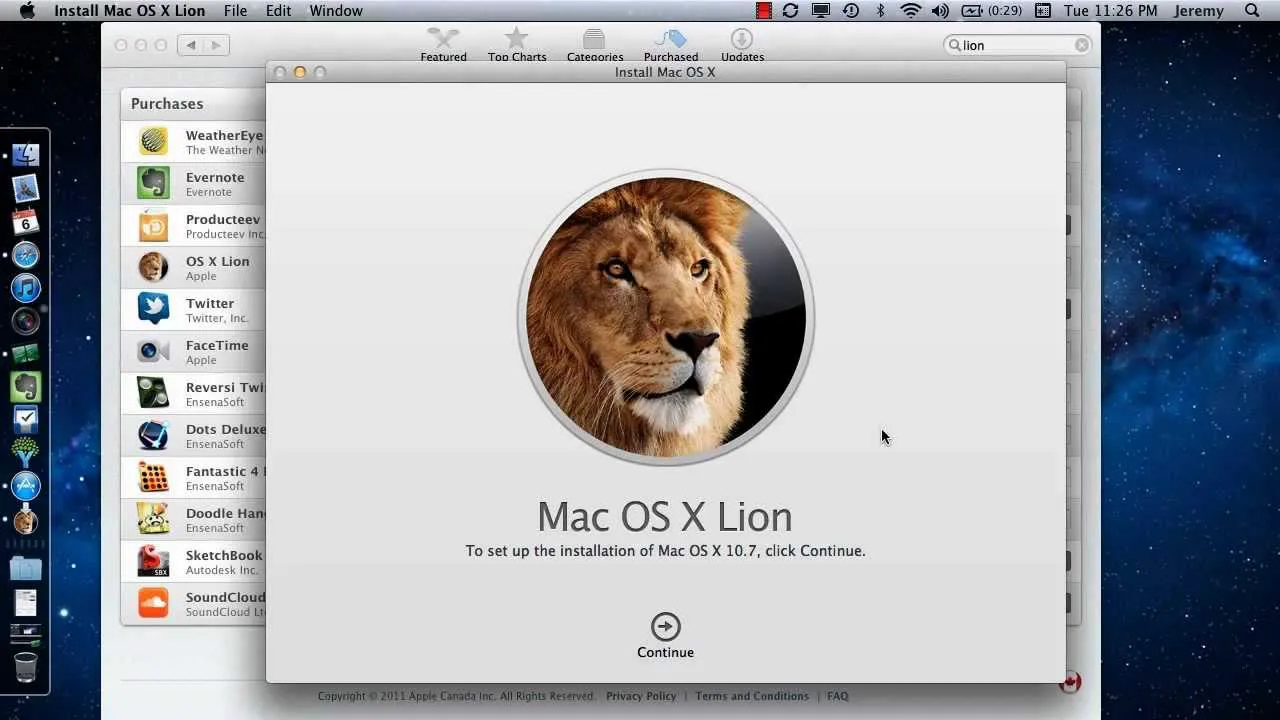
Mac OS X 10.6 Snow Leopard
Released in 2009, Snow Leopard was meant to be a refinement of its predecessor, Leopard.
Most of its changes, such as rewriting the Finder application, are not intended for users to see. Therefore, users may experience a few changes in the user interface. It received positive feedback for its low price and increased performance and efficiency.
However, like Leopard, Snow Leopard does not support macOS 9/Classic software at all. The release of Snow Leopard also marked the switch of distribution from the optical disc to the App Store.
Download Mac OS X Snow Leopard
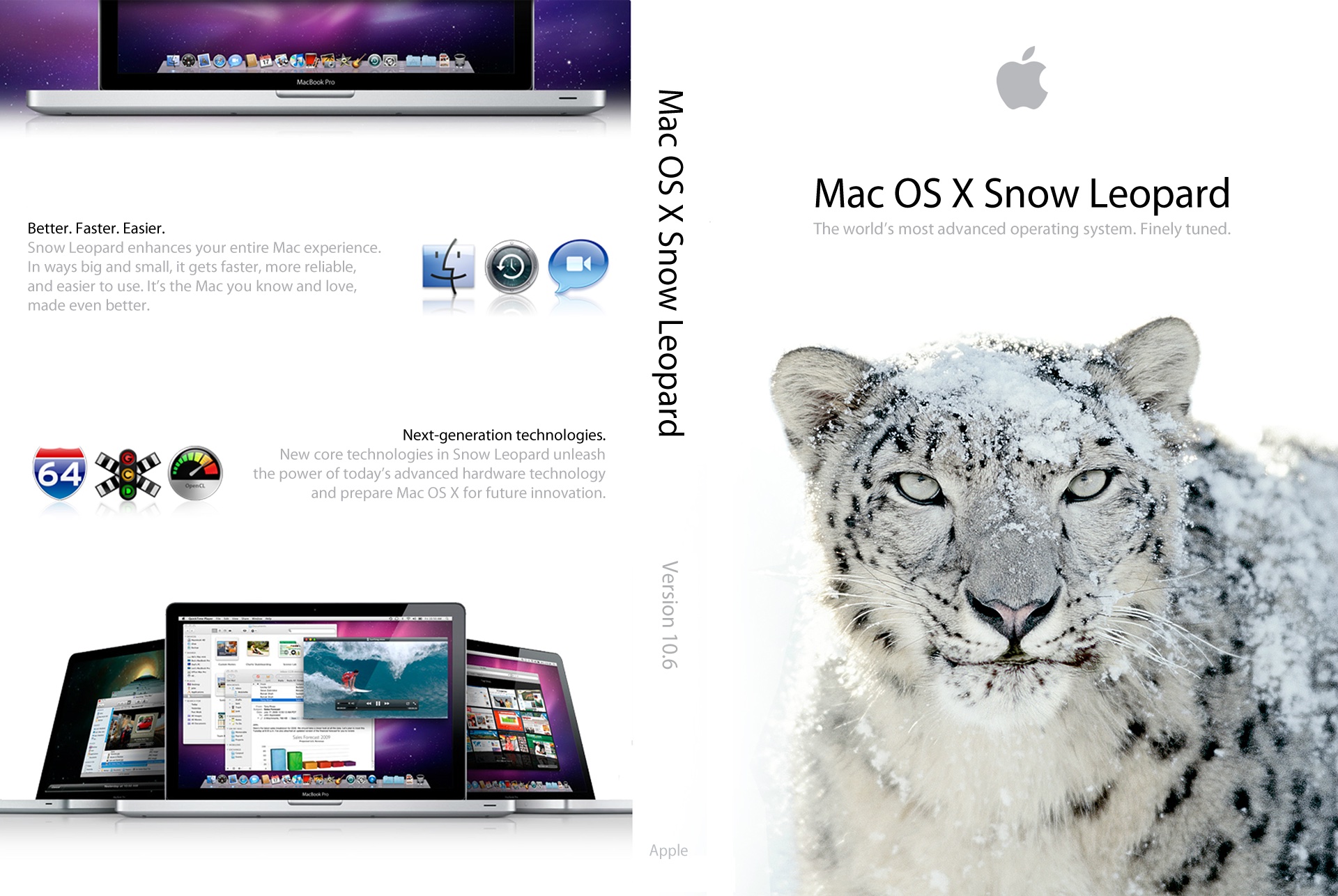
Click the below button to share the macOS versions list.
Which Mac operating system is the best so far?
The answer to this question may vary from case to case. Generally speaking, the best macOS version is the latest one that your Mac is eligible to upgrade to. There are a couple of reasons for that conclusion:
- Apple updates OSes annually with improved features and better security. The latest version is more likely to save you from bugs older versions can't fix.
- As App developers update their products, older versions of operating systems will roll off the supporting matrix. If your OS is incompatible with the upgraded apps, you may find yourself stuck with the old ones.
However, if you need to run some legacy apps on Mac, Mojave is the final version of macOS to support 32-bit software.
How to know if an app is 32-bit or 64-bit?
Steps to check if an application is 32-bit or 64-bit on macOS:
- Click the Apple logo > About This Mac > System Report.
- Under the Software tab, choose Applications.
- Select the app in question.
The information you see varies on different macOS.
On macOS Mojave and earlier:
Under the 64-Bit (Intel) column, you can see the word Yes or No used to indicate an app's architecture.
Yes: 64-bit
No: 32-bit
On macOS Catalina and later:
Since Apple stopped supporting 32-bit apps in macOS Catalina, all applications running on Mac are 64-bit. So instead of showing 32-bit or 64-bit, it tells you whether the app is optimized for Intel or M1 Mac, etc.
In the Kind column, you will find five types of apps:
Universal: Run on Intel and M1 Macs
Intel: Only for Intel Macs
Apple Silicon: Only for M1 Macs
iOS: iPhone and iPad apps available on Apple Silicon Macs
Other: For others
If you want to run some old 32-bit apps, you will need to downgrade your current macOS to macOS Mojave.
If you wish to learn if your Mac's processor is 32 or 64-bit, read: How to Tell if Your Mac is 64 Bit or 32? ARM or x64?
Which macOS should you use?
After viewing the list of Mac operating systems, you may be curious about which macOS you should use. A quick answer to that is the latest version of macOS your Mac supports, because it gives you the best security and features your current Mac models can receive. If you are not running the newest available OS on your Mac models, consider updating macOS.
Apple releases a new version of macOS yearly, but not every Mac model can benefit from it. Currently, Apple provides security patches and software maintenance for the latest macOS (macOS Sequoia) and the previous two major releases (Sonoma & Ventura).
Check the list below to find the best version of macOS suitable for your Mac.
List of Mac models compatible with macOS Sequoia:
- iMac: 2019 and later
- iMac Pro: 2017 and later
- Mac Studio: 2022
- MacBook Air: 2020 and later
- MacBook Pro: 2018 and later
- Mac mini: 2018 and later
- Mac Pro: 2019 and later
List of Mac models compatible with macOS Sonoma:
- MacBook Air: 2018 or later
- MacBook Pro: 2018 or later
- Mac Pro: 2019 or later
- Mac mini: 2018 or later
- iMac: 2019 or later
- iMac Pro: 2017 or later
- Mac Studio: all models
List of Mac models compatible with macOS Ventura:
- MacBook: late 2017 or later
- MacBook Air: 2018 or later
- MacBook Pro: 2017 or later
- Mac Pro: 2019 or later
- Mac mini: 2018 or later
- iMac: 2017 or later
- iMac Pro: 2017 or later
Is your Mac too old to update?
You can always update your Mac if it's not running the latest macOS available to it. To know which one on the list of Mac operating systems still supports your Mac, go to the Apple menu, click About This Mac, note down your Mac model, and then check the list above for the newest macOS compatible with it.
You can click the button below to share this post on your favorite platform.
